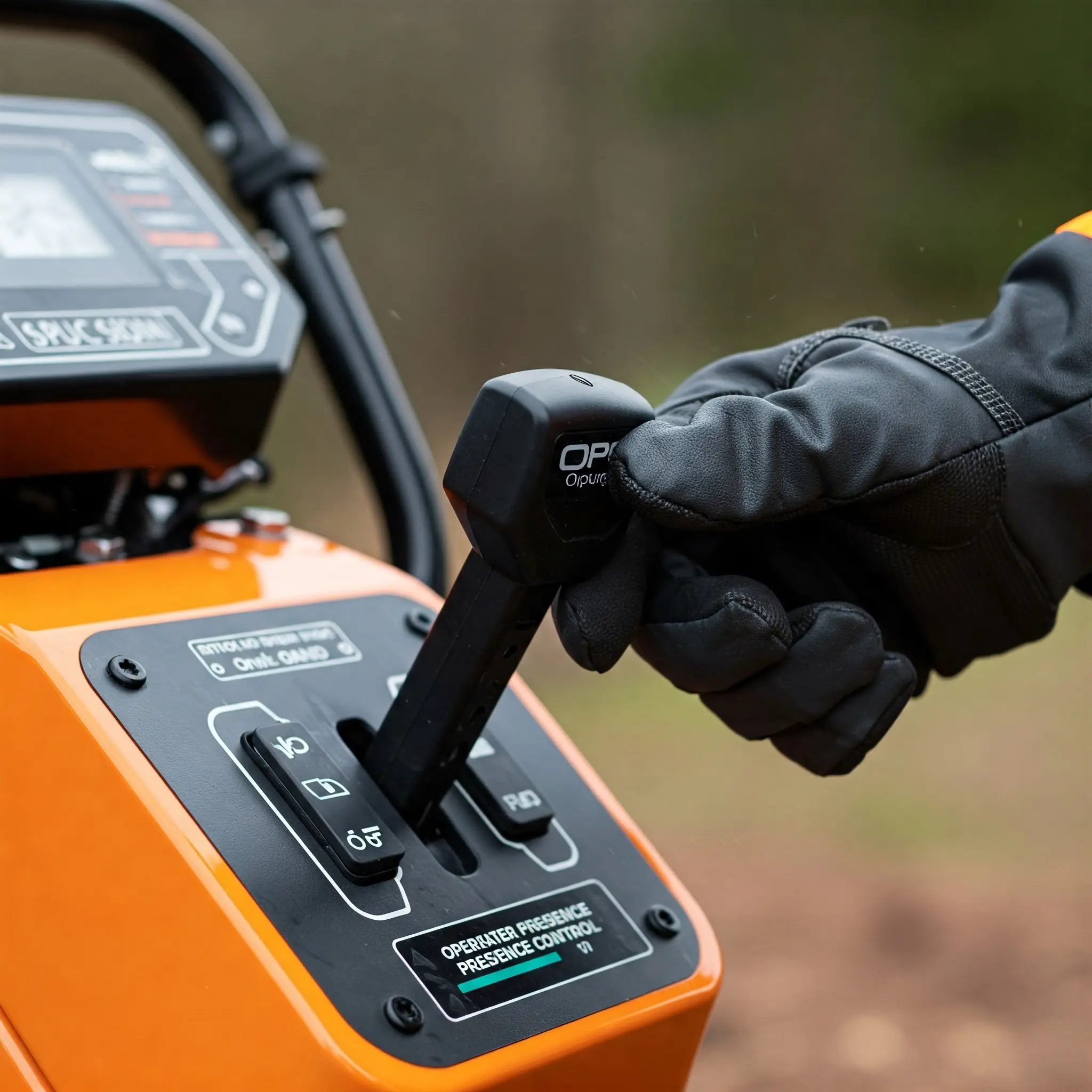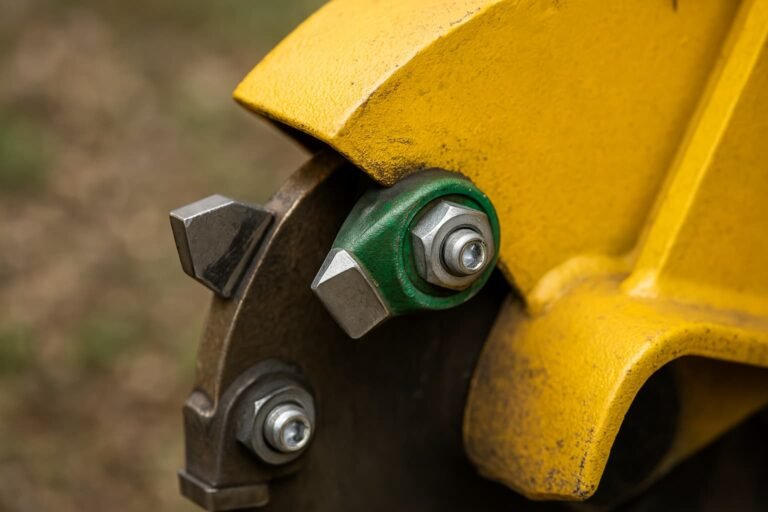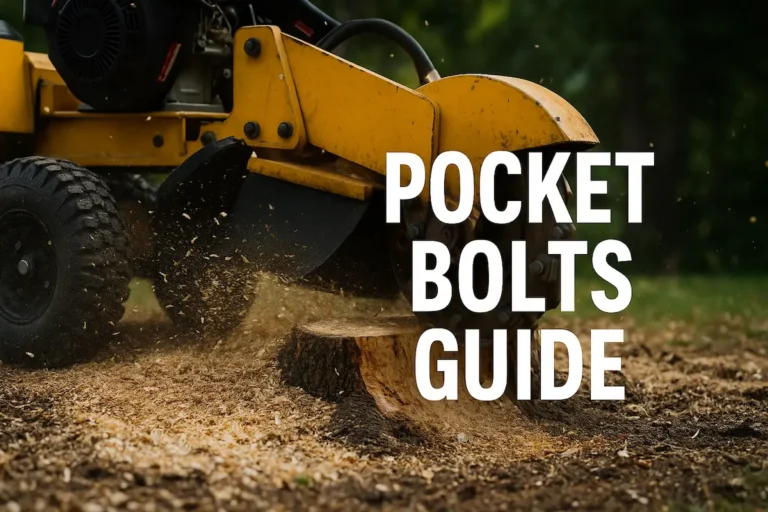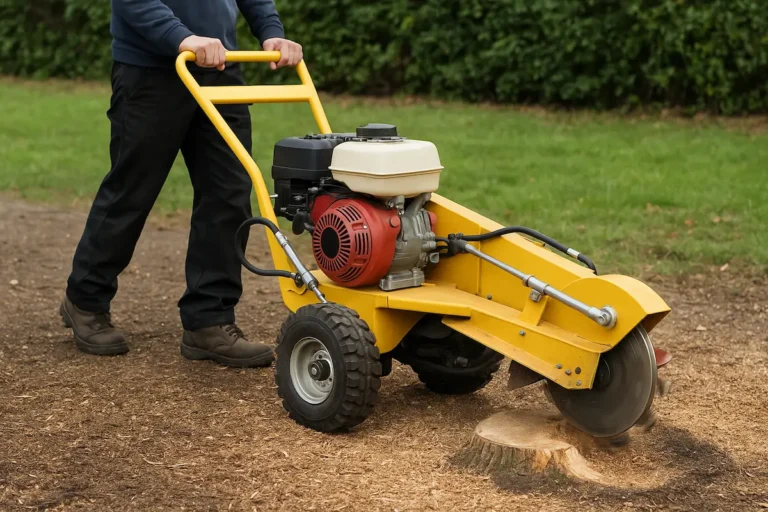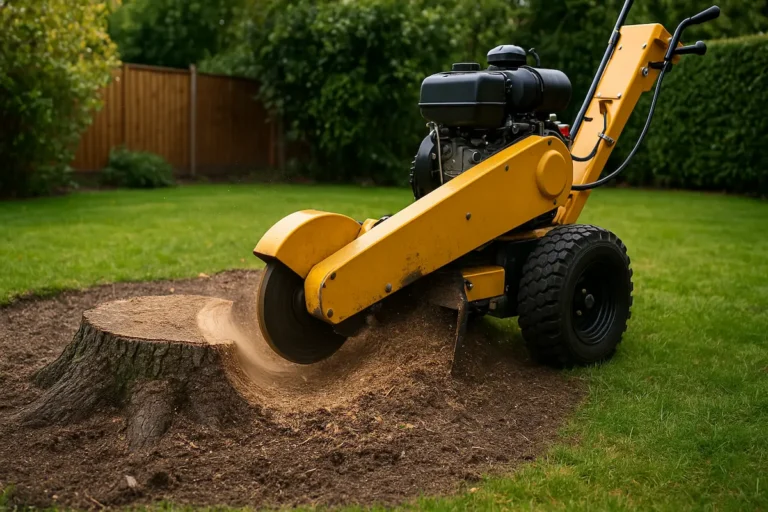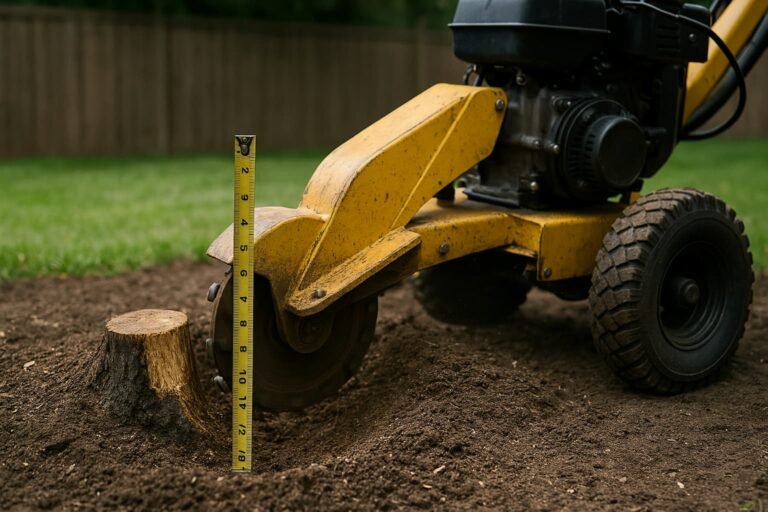Understanding Operator Presence Control (OPC): Your Essential Safety Guide for Stump Grinder Hire
Hiring a stump grinder is a great way to remove old tree stumps.
But these machines are powerful and need careful handling.
Operator Presence Control (OPC) is a key safety part you must understand.
This guide explains what OPC is and why it keeps you safe.
What is Operator Presence Control (OPC) on a Stump Grinder?
Operator Presence Control is a special safety switch or lever.
Think of it like a ‘dead man’s switch’.
It makes sure the machine only works when you are holding the controls.
If you let go, the dangerous part, like the cutting wheel, stops quickly.
This helps prevent accidents if you slip or move away.
It requires keeping hold of a handle or lever to make the cutting wheel spin.
Letting go stops the power to the wheel almost instantly.
This is not just a fancy feature; it is vital for safety.
Key Takeaways: OPC Safety Impact
- Functional OPC is Critical: A working Operator Presence Control system acts as a vital safety net, stopping the cutting wheel if the operator lets go of the controls (e.g., during a slip or distraction).
- High Risk without OPC: Operating with a faulty or bypassed OPC dramatically increases severe injury risk, as the wheel won’t stop automatically when control is lost.
- Pre-Use Checks Essential: Always confirm the OPC is present and functional before starting work. Never use a machine with a non-functional OPC.
Why OPC is a Crucial Safety Feature for Stump Grinding
Stump grinders have speedy spinning cutting wheels.
These wheels have sharp teeth designed to tear through wood.
Contact with a spinning wheel can cause terrible injuries.
The OPC system is there to stop this from happening accidentally.
It protects you if something unexpected occurs.
Imagine slipping on wet grass while grinding.
Your hands might automatically come off the controls.
With a working OPC, the cutting wheel stops right away.
This prevents a severe accident.
OPC provides a basic safety net for all users.
It is essential if you are hiring and are less familiar with the machine.
Preventing Severe Injury from the Cutting Wheel
The main job of the OPC is simple: stop the wheel when you let go.
This stops the grinder from causing harm if you:
- Slip or trip while moving the machine.
- Get distracted suddenly.
- You are hit by flying debris, causing you to stumble.
- They need to move away quickly for any reason.
Without OPC, the wheel could keep spinning, posing a considerable danger.
One user on a garden forum shared a near miss:
“I slipped on a hidden root. I let go of the handles reflexively. Thank goodness for the dead man’s switch, which stopped the wheel instantly.”
This shows how vital OPC is in real situations.
Meeting Essential Safety Standards in the UK
Good quality, modern stump grinders must-have safety features like OPC.
Manufacturers include these systems to meet safety rules.
Reputable hire companies in the UK only offer machines that meet these standards.
While you do not need to know the rule numbers, know that OPC is standard.
It shows the machine is designed with user safety as a top priority.
Always choose a hire company that checks its equipment regularly.
How Does OPC Function on Different Stump Grinders?
The exact way OPC works can look slightly different on various grinder models.
However, the basic idea is always the same.
You must actively hold something for the cutting wheel to work.
Letting go stops the wheel.
Let’s look at the common types you might find when hiring.
Common OPC Mechanisms on Walk-Behind Grinders (Handle Levers)
Most walk-behind stump grinders, the kind you push, use handle levers.
You often find one or two levers or triggers built into the handlebars.
You need to squeeze or hold down these levers continuously.
This action engages the clutch, which sends power to the cutting wheel.
When you release the lever(s), the clutch disengages.
The power stops flowing to the cutting wheel.
Many machines also have a brake linked to the OPC.
This brake quickly stops the wheel from spinning freely after you let go.
You should hear or feel the wheel stop fast, not coast slowly.
OPC Systems on Tracked or Ride-On Grinders (Levers, Joysticks, Seat Sensors)
Larger stump grinders, like tracked or ride-on models, have similar systems.
They might still use handlebar levers if operated from behind.
Some use joysticks with buttons or triggers that act as the OPC.
You must hold the button while moving the joystick to operate the wheel.
Ride-on grinders often have a seat sensor.
This sensor detects if you are sitting in the operator’s seat.
If you get off the seat, the sensor signals the machine.
It will stop the cutting wheel or sometimes the entire machine.
This prevents the grinder from working if nobody is in control.
No matter the type, the safety goal is the same.
Locating the OPC Controls on Your Hire Grinder
Before you even think about starting the engine, find the OPC controls.
Ask the hired staff when you collect the grinder or if it has been delivered.
Say: ” Please show me the Operator Presence Controls or dead man’s switch.”
Make sure they point out the exact levers or buttons.
Touch them yourself so you know where they are without looking.
You must be comfortable with the OPC location before starting work.
It should feel natural to hold them when operating.
Your Responsibilities: Checking the OPC Before You Start Grinding
Checking the OPC works correctly is your job as the hirer.
Please do not assume it is working perfectly. A quick test protects you.
Think of it like checking your car brakes before driving.
It is a vital but straightforward safety step.
This check should be part of your routine every time before you start grinding.
Step 1: Ask the Hire Company
When you book or collect the stump grinder, confirm it has OPC.
Ask: “Does this grinder have a working Operator Presence Control?”
Also, ask: “Can you show me how to test it safely?”
A good hire company will happily confirm this and show you.
Step 2: Visually Inspect the Controls
Look closely at the OPC levers, triggers, or buttons.
Do they look damaged, bent, or stuck?
Does anything look like it has been tampered with or tied down?
Report any concerns immediately to the hiring company.
Never use a machine if the safety controls look broken.
Step 3: Perform a Safe Function Test (Crucial!)
This is the most critical check. The hiring company should demonstrate this.
Follow these steps in a clear, open area away from people and objects:
- Start the Engine: Follow the standard starting procedure the hire company shows. Keep the cutting wheel disengaged.
- Try Engaging WITHOUT OPC: Gently try to engage the cutting wheel clutch lever without holding the OPC lever(s).
- Correct Result: The cutting wheel should NOT engage or try to spin.
- Engage WITH OPC: Now, correctly hold the OPC lever(s) as shown.
- Engage the Cutting Wheel: While holding the OPC, engage the cutting wheel clutch lever.
- Correct Result: The cutting wheel should now engage and start spinning.
- Release the OPC: Let go of only the OPC lever(s) quickly and smoothly. Keep holding any other operating handles.
- Correct Result: The cutting wheel should immediately disengage. You should see and hear it stop spinning quickly (within seconds). The brake should activate.
Important Safety Notes for Testing:
- Always follow the specific instructions given by the hire company and the machine’s manual. Procedures can vary slightly.
- Perform this test on flat ground.
- Ensure no one else is nearby.
- Even during the test, wear your safety gear (eye protection, gloves, etc.).
This test confirms the OPC system works both ways: it allows operation when held and stops operation when released.
Quick Scan: Common OPC Problems to Watch For
- The wheel engages without holding OPC. It is a major fault! Do not use.
- The wheel does not disengage when OPC is released: Major fault! Do not use.
- Wheel stops slowly (coasts): The brake may be faulty. Could you report it?
- The OPC lever feels sticky or jammed: It might not release properly. Could you report it?
- OPC seems bypassed or tied down: Extremely dangerous! Refuse to use the machine.
What to Do if the OPC Seems Faulty
If the OPC fails any part of the function test, STOP immediately.
Do not attempt to use the stump grinder.
Turn off the engine safely.
Contact the hire company straight away.
Explain the problem clearly (e.g., “The wheel kept spinning when I let go of the safety lever”).
Do not try to fix the problem yourself.
Using a machine with faulty safety controls is incredibly risky.
A reputable hire company will replace the machine or fix the issue.
Never Bypass or Disable the Operator Presence Control
This warning is critical.
You must NEVER tamper with, bypass, wedge, or tie down the OPC levers or switches.
Some think it makes the job easier by not holding the lever.
This is incredibly dangerous and completely defeats the safety system.
Doing this puts you and anyone nearby at massive risk of severe injury.
It is like turning off the airbags in your car.
Bypassing safety controls will likely void your hire agreement.
It may also affect any insurance coverage.
Safety comes first, always. Never disable the OPC.
Experienced operators stress this point constantly in online forums and safety guides. They know the risks involved.
The Benefits of a Functional OPC for Your Safety
Knowing your hire grinder has a working OPC gives you peace of mind.
It provides a vital safety backup if things go wrong.
- Reduces Risk: Significantly lowers the chance of injury from the cutting wheel if you lose control.
- Builds Confidence: Helps you operate the machine more confidently, knowing the failsafe is there.
- Allows Focus: You can concentrate better on the grinding task itself.
- Meets Standards: Ensures the machine aligns with expected safety practices.
Think of it as essential safety equipment, like your goggles or gloves.
Ensuring Safety: OPC and Our Stump Grinder Hire Fleet Commitment
At treestumpgrinderhire.com, your safety is our top priority.
We understand how vital features like Operator Presence Control are.
Our stump grinders come from trusted manufacturers known for safety.
We perform regular checks and maintenance on all our equipment.
This includes specifically testing the OPC system function.
We ensure the levers work correctly and the wheel brakes engage properly.
Our staff will always show you the OPC controls during the handover.
We will demonstrate the safe function test described in this guide.
We want you to feel confident and safe using our machines.
Well-maintained equipment is safer equipment.
Data from equipment rental associations shows that regular maintenance, including safety checks, reduces accident rates. While specific stats on OPC checks are combined with general maintenance, the principle is clear: checked machines are safer.
Ready to Hire a Stump Grinder Safely?
Now you understand Operator Presence Control and why it is so important.
Checking the OPC is a quick but vital step before you start grinding.
It helps ensure you can complete your stump removal job safely.
Remember the key steps:
- Ask us about the OPC.
- Inspect the controls visually.
- Test the function safely as shown.
- Never bypass the system.
- Report any problems immediately.
We are here to help with any questions about safe stump grinder operation.

